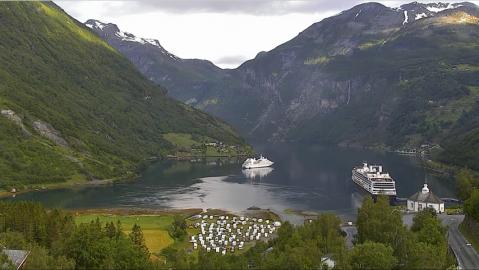Dva kilometara jugoistočno od Rogoznice nalazi se rt Planka (rt Ploča ili Pločica) najistureniji dio istočne obale Jadranskog mora koji zemljopisno i klimatski dijeli Jadran na sjeverni i južni. To je mjesto na kojem se snažno sudaraju sjeverni i južni vjetrovi, ciklone i anticiklone, morske struje. Na njemu se lome najveći valovi Jadranskog mora i vladaju najtiše bonace koje se mogu zamisliti. Sve to stvara gigantski prirodni spektakl koji se ne propušta jer nešto slično nije moguće vidjeti i doživjeti nigdje drugdje.
Rt Planku i njegovu ćud spominju u najstarijim sačuvanim opisima istočne obale Jadrana. Grčkim pomorcima bio je pod imenom Diomedov rt poznat i prije 6. stoljeća pr. K. Homer u “Ilijadi” daje naslutiti da je do njega nakon Trojanskog rata doplovio i sam Diomed, jedan od najvećih junaka grčke mitologije, a grčki povjesničar Timej već je u 4. stoljeću pr. K. opisao neobične prirodne anomalije koje izaziva. Njegov opis vremenskih prilika nad Diomedovim rtom spada među najstarije opise neke meteorološke pojave u europskoj kulturi. O Diomedovom rtu u 3. stoljeću pr. K pisao je i grčki učenjak, otac zemljopisa, astronom i matematičar Erastoten, tu se događa i jedna od važnih epizoda epa o Argonautima, a u 1. stoljeću spominje ga Plinije Stariji u “Prirodoslovlju”, prvom enciklopedijskom djelu europske kulture.
Za Puntu Planku vezano je i jedno od čuda koja se pripisuju kršćanskom svecu Ivanu Trogirskom, trogirskom biskupu iz 11. stoljeća . Prema legendi on je nakon brodoloma kod rta Planka hodajući po valovima spasio život kralju Kolomanu i svim mornarima. U spomen na njega i njegova čudesna djela tu je 1324. godine izgrađena zavjetna crkva.
Two kilometres south-east from Rogoznica there is a Cape Planka which is the most outstretched part of the eastern coast of the Adriatic Sea, and it is a geographical and climate divider of the north and south Adriatic. It is a place of strong north and south collision of wind, cyclones and anticyclones, and sea currents. The largest waves of the Adriatic Sea crash there and on the other hand the sea is as calm as you could possibly imagine. It all creates a stunning natural spectacle which noone should miss because you can neither see nor experience similar things anywhere in the world.
This cape dramatically affects the weather conditions in Dalmatia, especially in Rogoznica where, because of its impact during the three summer months, the rainfall is only 60 mm/month, almost three times less than in the neighbouring cities of Split and Šibenik.
Cape Planka and its mood was first mentioned in the oldest preserved descriptions of the eastern Adriatic coast. It was known to Greek sailors under the name of Diomede’s Cape in the 6th century BC. Homerus in his work ‘Iliad’ reveals that after the Trojan war Diomedes himself, who was one of the greatest heroes of Greek mythology, sailed around it, and Timaeus, a Greek historian, already in 4 century BC described the unusual natural anomaly which it causes. His description of weather conditions over the Diomede’s Cape belongs to the oldest descriptions of a meteorology phenomena in the European culture. Also a Greek scholar, geographer, astronomer and mathematician Eratosthenes wrote about Diomede’s Cape in the 3rd century BC, an important epic poem about the Argonauts took place there, and in the 1st century it was mentioned by Pliny the Elder in ‘Natualis Historia’, the first encyclopedic work of European culture.
One of the miracles attributed to the Christian saint John, the bishop of Trogir from the 11th century is related to Cape Planka. According to the legend, after the shipwreck by Cape Planka he walked on the waves and saved the lives of King Coleman and all the sailors. In memory of him and his miracles, at this place a votive church was built in 1324.
- Category
- LIVE CAM CR
- Tags
- Punta Planka, Croatia - Live panorama view, visiteurope, visitnorway, vindheim, smartfishfarm, dab24.com, nordic.tv, radio, webradio








